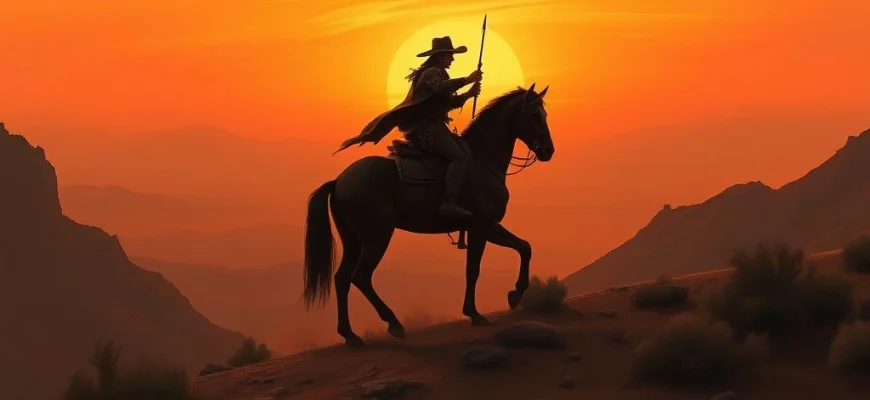If you loved the gritty revenge tale and raw action of Navajo Joe (1966), this list is for you. We’ve curated 10 movies and shows that capture the same intense spirit, featuring lone warriors, brutal justice, and sweeping Western landscapes. Whether you're a fan of classic Spaghetti Westerns or modern action-packed dramas, these picks will keep you on the edge of your seat.

A Fistful of Dollars (1964)
Description: A gritty tale of a lone gunslinger navigating a town torn apart by rival factions. The film's minimalist dialogue and focus on action and survival are hallmarks of the genre.
Fact: This film popularized the spaghetti western genre internationally. It was an unofficial remake of Akira Kurosawa's 'Yojimbo.'
 Watch Now
Watch Now 
For a Few Dollars More (1965)
Description: Centers on bounty hunters with complex motivations, blending action with psychological depth. The film's tense atmosphere and morally gray characters are typical of the genre.
Fact: The film's success cemented the director's reputation as a master of the spaghetti western. It was the second installment in the 'Dollars Trilogy.'
 Watch Now
Watch Now 
The Good, the Bad and the Ugly (1966)
Description: A quintessential spaghetti western with a focus on morally ambiguous characters, intense standoffs, and a gritty, desolate landscape. The film's visual style and themes of greed and survival align closely with the genre's conventions.
Fact: The film's iconic score by Ennio Morricone is one of the most recognizable in cinema history. It was the highest-grossing spaghetti western of its time.
 Watch Now
Watch Now 
Django (1966)
Description: Follows a drifter seeking vengeance in a violent, lawless town. The film's brutal action and stark visuals are emblematic of spaghetti westerns.
Fact: The film spawned numerous unofficial sequels and inspired Quentin Tarantino's 'Django Unchained.' It was banned in several countries for its extreme violence.
 Watch Now
Watch Now 
Day of Anger (1967)
Description: A story of betrayal and revenge, featuring a young protagonist learning the harsh realities of the frontier. The film's dark tone and focus on personal justice are key elements.
Fact: The film's score was composed by Riz Ortolani, known for his work in Italian cinema. It was based on a novel by Ron Barker.
 Watch Now
Watch Now 
The Great Silence (1968)
Description: A bleak and snowy western that subverts traditional genre tropes, focusing on a mute gunslinger and a corrupt system. The film's unconventional setting and moral ambiguity stand out.
Fact: The film was shot in the Italian Alps, a rare setting for a western. It has two different endings for European and American releases.
 Watch Now
Watch Now 
Once Upon a Time in the West (1968)
Description: Features a slow-burning narrative with a strong emphasis on revenge and justice, set against the backdrop of a changing frontier. The cinematography captures vast, empty landscapes, enhancing the film's epic and melancholic tone.
Fact: The film was initially a commercial failure but later gained critical acclaim and is now considered a masterpiece. It was originally conceived as a homage to classic westerns.
 Watch Now
Watch Now 
Death Rides a Horse (1967)
Description: Revolves around a man seeking vengeance for his family's murder, with a strong emphasis on action and retribution. The film's pacing and visual style are characteristic of the genre.
Fact: The film's title was changed for international releases to avoid confusion with other westerns. It features a memorable showdown in the desert.
 Watch Now
Watch Now 
Ace High (1968)
Description: A comedic yet action-packed western with a focus on camaraderie and heists. The film's lighter tone and ensemble cast provide a different take on the genre.
Fact: The film is a sequel to 'The Five Man Army.' It features a mix of Italian and American actors in its cast.
 Watch Now
Watch Now 
Sabata (1969)
Description: A more action-oriented entry in the genre, featuring a mysterious gunslinger with a flair for theatrics. The film's blend of humor and violence is distinctive.
Fact: The character of Sabata was so popular that it led to two sequels. The film features elaborate and inventive weaponry.
 Watch Now
Watch Now 








